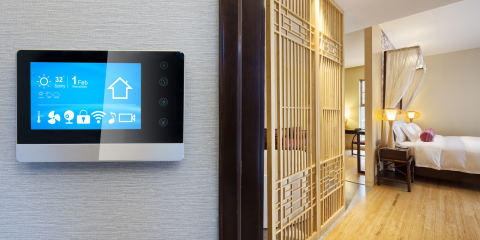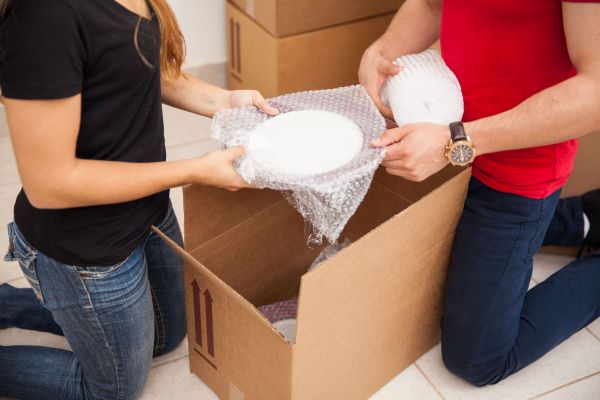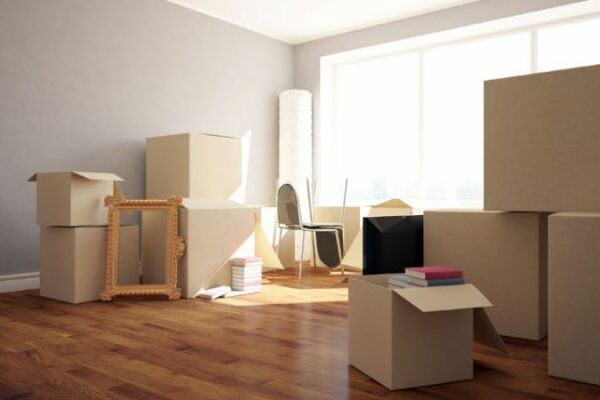When it comes to connected devices and smart homes, there are two firmly established camps:
- Enthusiasts who fully embrace connected devices and love the convenience they offer
- “Skeptics” who would rather move into a shack in the woods than step foot into a connected home
Whichever camp you fall into, it’s increasingly likely you will share space with smart home technology at some point, and that means you’ll need to learn how to protect personal information that is stored and tracked by any digital devices that take up residence in your home.
Whether you enthusiastically installed your own smart device or your landlord unexpectedly upgraded the thermostat in your rental, there is an increasing amount of information that can accidentally be left behind or unsafely discarded when moving. So, how do you protect yourself during a move?
What to do with items you are bringing along
Smart home tech can be expensive, especially when you add all of the pieces together. Combine this with the data these devices contain and it’s likely that you will want to bring most or all of it along, if possible.
Follow the instructions that came with your smart home devices (or find them online) for the safest and easiest way to remove them from your home. For some items, like your robot vacuum, this is as simple as resetting, unplugging, and packing them up, but others—like your smart thermostat or smart locks—will require a little more effort.
PRO TIP: Uninstall any smart home tech you plan to take with you before showing your home, and don’t include it in the listing.
Alternatively, inform your real estate agent which products you will be uninstalling and bringing with you so they can disclose this information to potential home buyers during the open-house.
In most cases, your smart home devices will have to be factory reset, or will at least benefit from being reset before you uninstall them from your old home (for more information about how to perform a factory reset on your devices, see the following section. Not only will this offer you some amount of protection if your devices get misplaced or lost during the move, but they will also be ready to learn about their new location in the home, as well as the layout, schedule, and patterns of your new place.
PRO TIP: To ensure their safe arrival, keep all connected devices in your personal vehicle so they don’t get misplaced.
What to do with items you can’t or don’t want to bring with you
For items you may want or have to leave behind, such as smart thermostats or security systems, you typically have two options:
- Do a factory reset to remove all of your data and remove the app from the hardware you use to control it.
- Call their customer service specialists to help arrange the transfer of accounts to a new home.
PRO TIP: Some security systems, such as ADT or Vivint, do not allow you to uninstall and bring all (or sometimes any) of the pieces of your security system with you, so check your contract before you start removing control panels and cameras. They may also charge a moving fee.
Here are the instructions for how to remove the product you are leaving behind from your app and digitally wipe your data from some of the most popular smart home thermostats and locks. If you don’t see yours listed here, simply go to the manufacturer website and check their FAQs or reach out to their customer support team.
Nest
- Remove the product from the Nest app.
- Reset your product to factory defaults.
- Press your thermostat ring to open the Quick View menu.
- Choose the Settings icon.
- Turn the ring to Reset and press to select.
- Choose the “All Settings” option to reset any learning and remove all your personal settings.
Ecobee
- On the thermostat, go to: MAIN MENU > SETTINGS > RESET > RESET ALL
Honeywell
- Log into the Honeywell My Total Connect Comfort account and select MY LOCATIONS listed towards the top of the screen.
- Select the cogwheel labeled SETTINGS and scroll down to locate the Mac ID and CRC number for the thermostat. Select the TRASHCAN listed next to the Mac ID and Mac CRC numbers.
August
- On your phone, open up the August app and go to the screen where you operate your lock.
- Select the Settings Gear Icon on the icon menu
- Select Factory Reset
- Select Reset Lock
- Your app is now reset to its factory settings.
Schlage
- Disconnect the batteries.
- Press and hold the outside Schlage button.
- While holding the outside Schlage button, reconnect the batteries.
- Release the outside Schlage button.
- *If you are moving the lock to a new door, install the lock on that door before continuing.
- To check that the lock was reset, press the outside Schlage button and enter one of the default access codes.
- If the reset was successful, the lock will perform a setup routine. Wait until the bolt stops moving. The reset and setup are complete.
Kwikset
- Highlight "ADMIN" then hit the check mark. (DO NOT SWIPE FINGER, proceed to step 2)
- Press down arrows 4X until the screen displays "FACTORY CODE"
- Hit top arrow 2X, the screen will then display (A).
- Hit right arrow once then hit top arrow and it will display (a).
- Repeat step 4 2X, until the screen displays (Aaaa) then hit the check mark.
- The screen will now display "RESETTING" and then the database will be cleared.
PRO TIP: The next tenants may not be so tech-savvy, so don’t forget to leave any instruction manuals behind, as well as contact details in case they need to reach you if they have any issues transferring ownership of the smart home devices.
If you’re feeling extra generous, leave a list of what type of tech comes with the house, what apps they will need if they’re going to keep it installed, and how to use it.
What to do with items you are disposing of
If you are sending your smart home tech off to be refurbished and resold, or recycled and properly disposed of, you’ll need to ensure it no longer contains any of your personal data. Even devices you might not have considered, like smart light bulbs, can contain important information—such as wireless network passwords—that is surprisingly easy to recover.
Whenever possible, you should personally do a factory reset of your smart devices before donating, selling, or disposing of them. Even if a disposal or refurbishing company claims to do it for you, it’s better to be sure that the device has been wiped yourself. Often this is as simple as poking around in the settings to find the factory reset options specific to your device.
If you’re not sure how to reset your connected devices, try this guide or look up your smart home items by name specifically. In some cases, you may also be able to encrypt the data before you erase the device, making it even harder for bad actors to recover any residual information that may be left on there.
PRO TIP: If you are planning to dispose of your smart home items, security analyst Josh Frantz cautions that factory resets may not always fully wipe your data and recommends (safely) making use of some more sure-fire solutions, such as a hammer, industrial shredder, or thermite.
Conclusion
Anytime you connect something to the internet, there is a level of risk involved. This risk can be compounded when you have to leave these items behind, or if you have to dispose of them during a move. However, if you want to revel in the convenience of smart locks, robot vacuums, lights that come on when you enter a room, and a voice-controlled assistant, don’t let this deter you. You can still enjoy and use connected devices in your home—you just have to be smart about your smart home tech, especially when you’re moving:
- Factory reset your devices.
- Uninstall and bring all the components you want and can.
- Transport smart home devices in your personal vehicle.
- For items you are disposing of, take extra care to ensure your information is protected. Sometimes this can mean smashing the internal components with a hammer, though personally wiping your data from your smart home devices should do the trick.
Ultimate Moving Guide
Get expert advice for planning your move in our 12-part guide.




